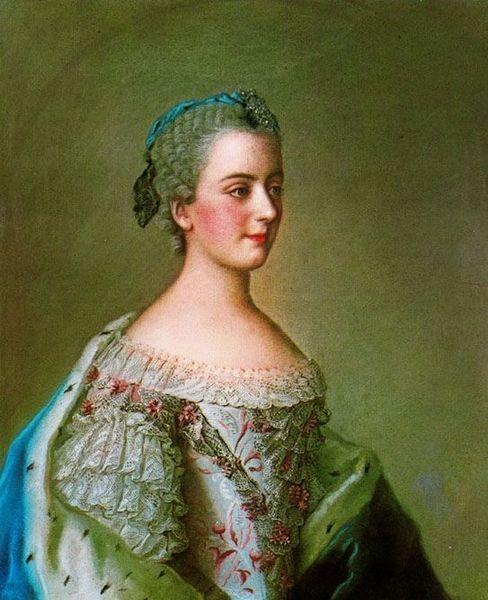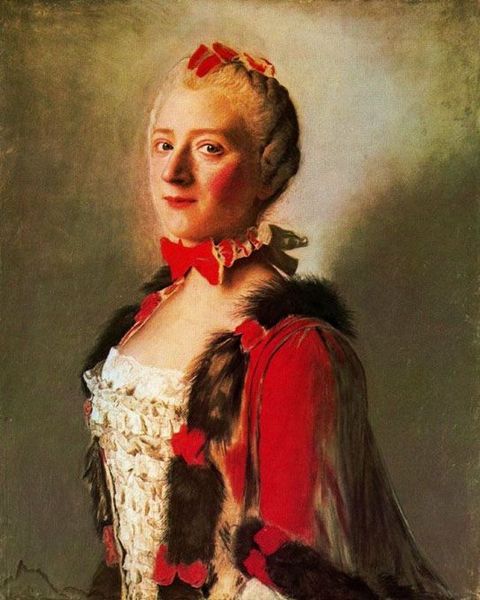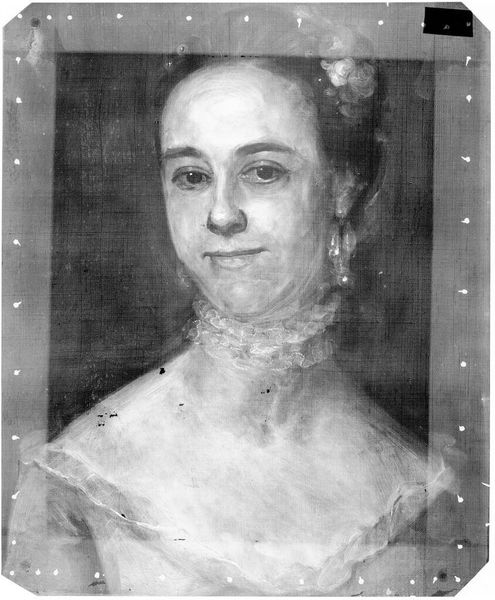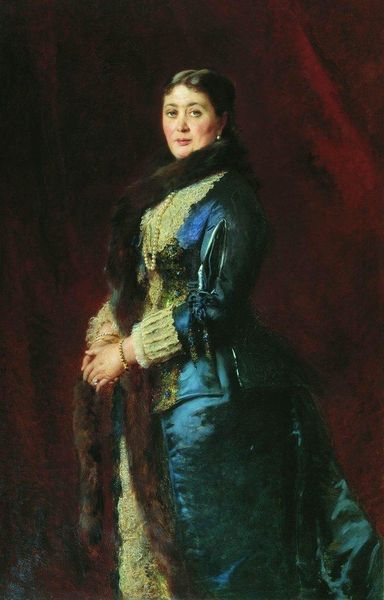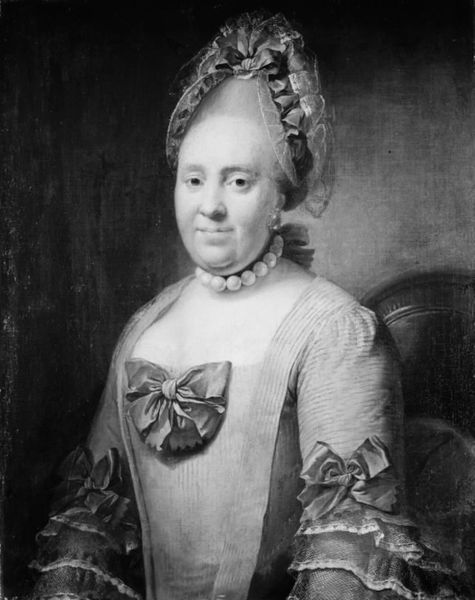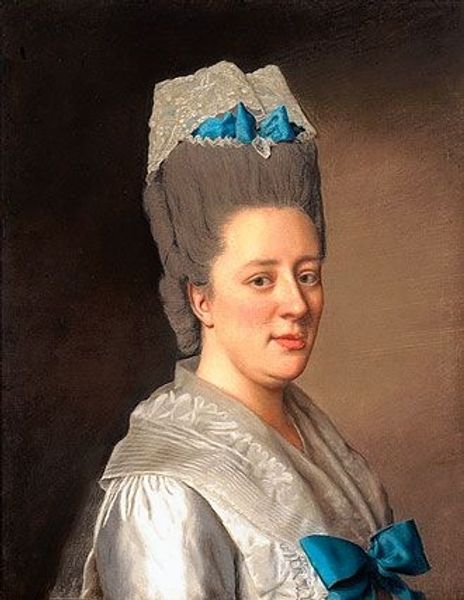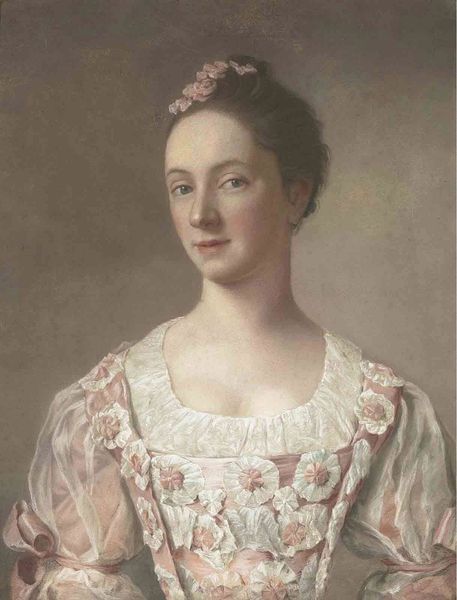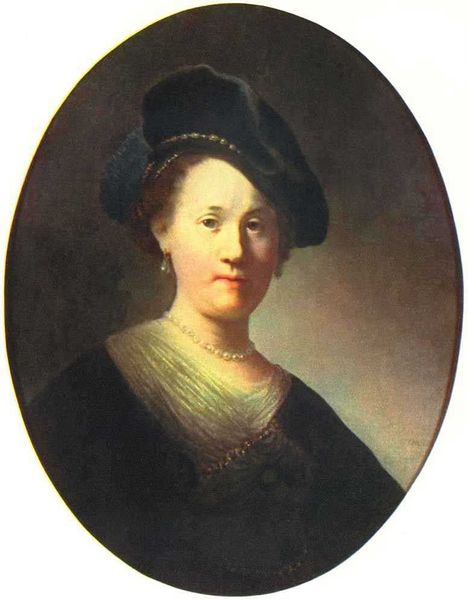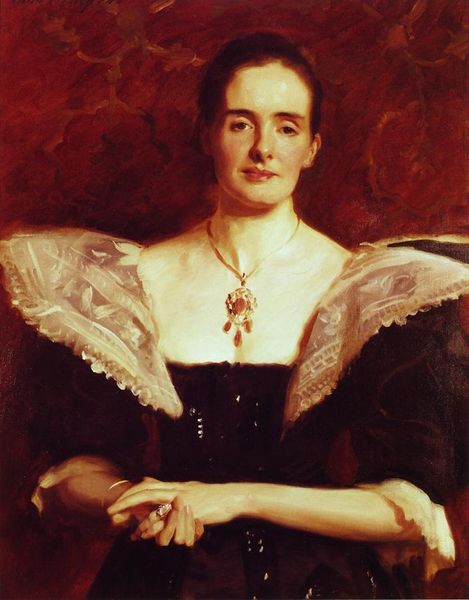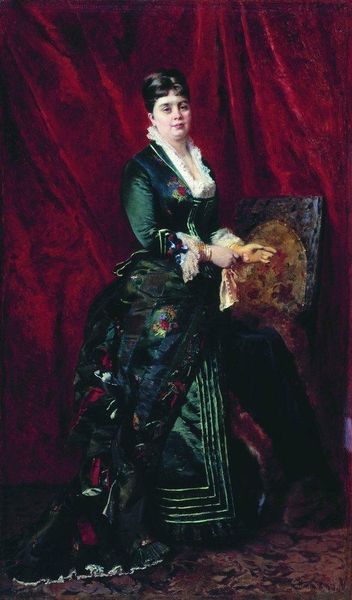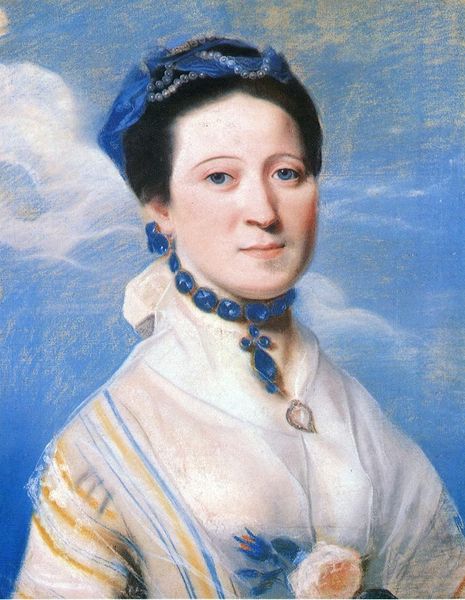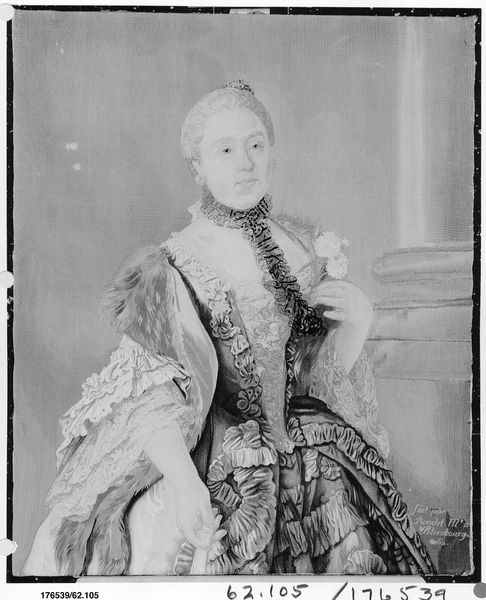
Copyright: Public domain
Editor: Here we have Jean-Étienne Liotard's "Portrait of Suzanne Navilledes," painted in 1777 using oil. I am immediately struck by the detail in her clothing. What's your perspective on it? Curator: Notice how Liotard meticulously renders the fabric's texture, its sheen. We have to think about where this cloth comes from: textile production in the 18th century, likely relying on exploitative labor practices. And that elaborate lace bonnet – it signifies not just wealth, but also the extensive labor that went into its creation. Does looking closely change how we perceive her image and status? Editor: Definitely. I was initially just impressed by the artistry, but now I’m thinking about all the unseen hands that contributed to this display. It's not just a portrait; it's like a document of material culture. How would the rise of industrial production influence the creation of this kind of artwork later on? Curator: The Industrial Revolution transforms production. Cheaper, mass-produced materials replace handmade goods, affecting not only fashion but also art patronage. Portraits may become more about capturing individual character than displaying social rank through meticulously rendered textiles. Consider how photography, too, challenges painting's role in accurately depicting surfaces and textures, impacting the material value associated with painted portraiture. Editor: So, the painting's focus might shift from material representation to something more conceptual or emotional, with changes to materials and processes along the way. It's a reminder that even something as seemingly straightforward as a portrait is deeply intertwined with broader social and economic forces. Curator: Precisely! We’ve unpacked how Liotard’s careful detailing reflects not just artistry, but the entire system of production and consumption of materials that shaped her world – and ours.
Comments
No comments
Be the first to comment and join the conversation on the ultimate creative platform.
